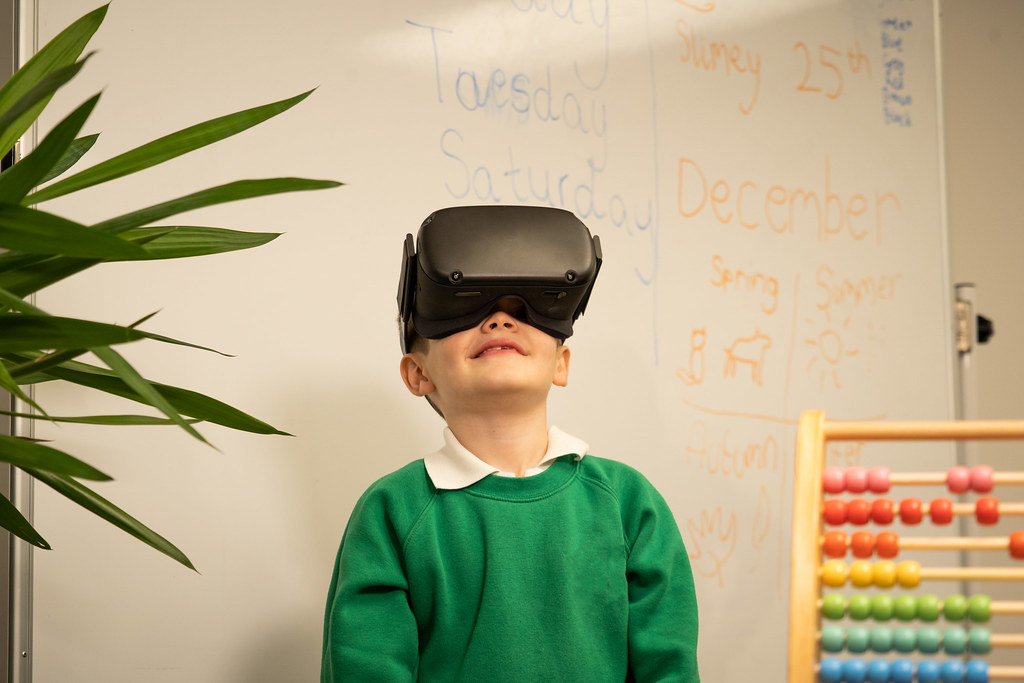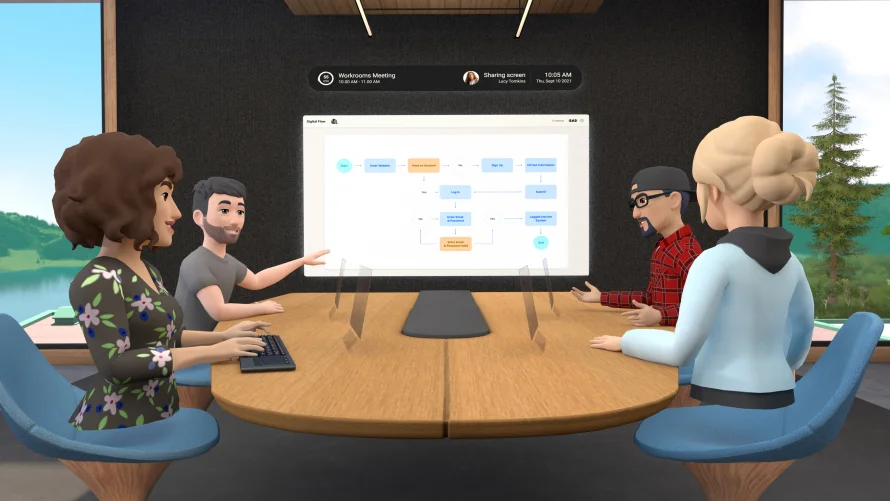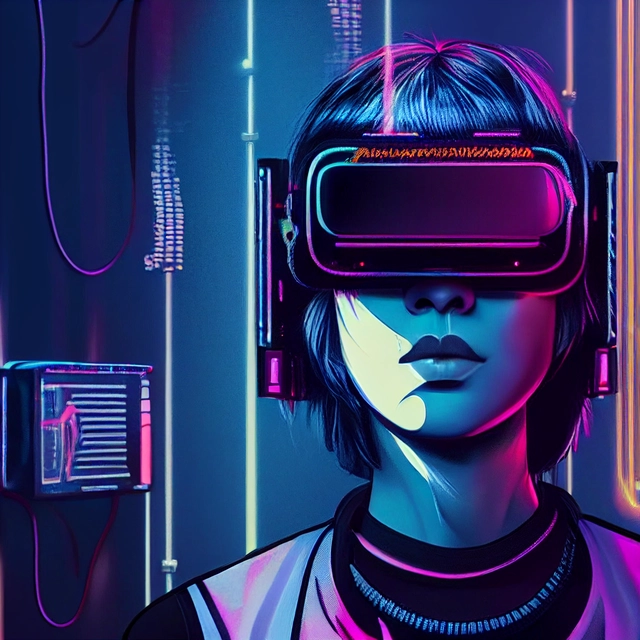Virtual reality is unlikely to fail, as it continues to evolve and expand into various industries such as gaming, education, enterprise, and entertainment. With ongoing advancements in hardware, software, and emerging technologies, VR has the potential to become an integral part of our daily lives, revolutionizing the way we learn, work, and play.
Hey there, fellow tech lovers! I’ve been super curious lately about the future of virtual reality (VR). Will it end up being a massive flop, or could it genuinely change the way we dive into the digital realm? In this article, I’ll spill the tea on VR’s true potential, chat about expert opinions, and explore what’ll make or break its success. Let’s get our geek hat on as we uncover the fate of virtual reality!
A Quick Peek at the VR Scene
Before we jump into the nitty-gritty, let’s get a feel for what’s happening in the VR world right now. Virtual reality has come so far since it first started, with major tech players pouring billions into creating mind-blowing VR headsets, games, and apps. The market is booming as everyday folks and businesses alike discover all the insanely cool things VR can do.
But, like any fresh tech on the block, there are doubts and worries about how long it’ll last. Is VR destined to be the next big thing, or will it crash and burn under all that hype? To figure that out, we need to look at a bunch of key factors that’ll decide the future of virtual reality.
Riding the Hype Train: The Impact of Media and Expectations on VR

Hype, Hype, Hype!
Let’s be real, hype can make or break a technology. The media loves to jump on the bandwagon and push the next big thing, but it’s not always rainbows and butterflies. Sometimes, the hype can create unrealistic expectations, and when those aren’t met, disappointment can follow. We’ve seen it before with other tech trends (remember Google Glass?), and VR is no exception.
The Good and the Bad
Now, it’s not all doom and gloom for VR. The hype surrounding virtual reality has undoubtedly helped bring attention and investment to the industry. Big names like Facebook (or should I say Meta?), Google, and Sony have thrown their weight behind VR, and that’s led to some fantastic developments.
But on the flip side, this hype can also set the bar too high. When people expect a flawless, fully immersive experience straight out of a sci-fi movie, the actual reality (pun intended) might fall short. It’s crucial for the VR industry to manage these expectations and focus on delivering real, tangible benefits to users.
Slow and Steady Wins the Race
The key here is to remember that VR is still a growing technology. It’s not going to change the world overnight, and that’s okay! As VR continues to improve and evolve, it’s essential to stay grounded and appreciate the progress it’s making, rather than getting caught up in a hype-induced frenzy. We need to give virtual reality the time and space to mature, develop, and find its footing in the tech landscape.
VR Advocates to the Rescue
One way to manage expectations is to have VR advocates and influencers share their experiences and insights. These folks can help showcase the technology’s true potential, highlight its real-world applications, and demonstrate the amazing experiences it offers, all while keeping things realistic. By focusing on the actual value VR brings to the table, we can create excitement without setting people up for disappointment.
In It for the Long Haul
At the end of the day, the VR industry needs to play the long game. Sure, the hype train can bring in attention and investment, but it’s the steady, incremental progress that’ll determine VR’s staying power. By focusing on innovation, addressing limitations, and fostering a supportive community, virtual reality has the potential to overcome the pitfalls of hype and emerge as a transformative force in the tech world. So, let’s stay patient, stay curious, and give VR the chance it deserves to truly shine!
Hardware and Accessibility: Barriers to VR Adoption

The Hardware Hurdle: Comfort and Compatibility
One significant roadblock to VR going mainstream is the hardware. We’ve seen some amazing advancements in VR headsets, but there are still improvements to be made. Many potential users face the following challenges:
- Comfort: Bulky and uncomfortable headsets
- Compatibility: Requiring powerful PCs or gaming consoles
- Cost: High price tags for headsets and compatible devices
Making VR Affordable: A Key to Mass Adoption
Let’s face it, not everyone can afford to shell out hundreds of dollars for a VR headset, especially when you add in the cost of a compatible gaming system or computer. For VR to reach a wider audience, the industry needs to focus on:
- Lower-cost headset options
- Standalone devices that don’t require extra hardware
- Frequent discounts and promotions
Untethered and Unencumbered: Freedom of Movement
Another crucial aspect is the freedom of movement. People want to dive into virtual worlds without feeling restricted by wires or limited space. To enhance the VR experience, the industry should prioritize:
- Wireless VR: Embrace wireless technology for headsets and controllers
- Inside-out Tracking: Develop tracking solutions that don’t rely on external sensors
- Space Optimization: Improve software that adjusts to the user’s available space
Simple and User-Friendly: The Path to Success
When it comes to tech, the easier it is to use, the more likely people are to embrace it. For VR to take off, it’s essential to focus on:
- Intuitive Interfaces: Create user-friendly controls and navigation
- Easy Setup: Simplify the process of setting up and configuring VR systems
- Guided Tutorials: Offer clear, step-by-step instructions for new users
- Cross-Platform Compatibility: Encourage seamless integration with various devices and platforms
The Future of VR Hardware: What to Expect
As the industry tackles these barriers to VR adoption, we can expect to see some exciting developments in the future:
- Lighter Headsets: Improved ergonomics and weight distribution for greater comfort
- Increased Resolution: Higher-quality displays for more immersive visuals
- Wider Field of View: Expanding the user’s visual range for a more realistic experience
- Haptic Feedback: Advanced haptic technology for more immersive tactile sensations
By addressing these hardware and accessibility challenges, the VR industry can pave the way for more widespread adoption. It’s an exciting time for virtual reality, and as long as developers keep pushing the boundaries of innovation, the future looks bright for VR enthusiasts everywhere!
The Expanding Universe of VR Content: Gaming, Education, and Beyond
While virtual reality gaming has undoubtedly been a major force in driving VR’s growth, it’s essential to look beyond gaming to realize VR’s full potential. Let’s explore how VR is making waves in education, enterprise, and entertainment.
Education: A New Dimension of Learning

In the realm of education, VR is opening up new avenues for learning experiences. Picture stepping into a virtual classroom, exploring ancient civilizations, or conducting experiments in a VR lab. Virtual field trips allow students to visit historical sites or natural wonders without leaving the classroom, while immersive training helps healthcare professionals practice surgeries and procedures in a safe, virtual environment. Language learning also gets a boost with VR, providing immersive experiences for everyone.
Enterprise and Industry: Boosting Productivity

When it comes to enterprise and industry, VR is proving to be a game-changer. Businesses are starting to see the benefits of integrating virtual reality into their operations. Product design and prototyping become faster and more cost-effective, remote collaboration allows teams to work together in a virtual space even when they’re physically apart, and employee training becomes more effective with VR simulating real-world scenarios across various industries. All of these advantages contribute to a more innovative and productive work environment.
Entertainment and Beyond: The Future Is Now

The entertainment industry is yet another area where VR can make a significant impact. Beyond gaming, VR offers immersive experiences in movies, concerts, and live events, bringing the action closer to the audience like never before. Imagine watching a film and feeling like you’re part of the scene or attending a concert in the front row from the comfort of your home. These experiences have the potential to redefine how we consume entertainment.
As VR continues to make strides in these fields, we can also expect to see its influence expand into other areas, such as mental health, fitness, and even social interactions. Virtual reality therapy, for example, has shown promise in treating conditions like PTSD, anxiety, and phobias. In the fitness world, VR can make exercise more engaging and enjoyable, motivating users to stay active. And when it comes to socializing, virtual worlds provide a platform for people to connect and interact in ways they never could before.
Ultimately, the expanding universe of VR content is key to its long-term success. As more diverse and engaging applications emerge across various sectors, VR will become an increasingly integral part of our everyday lives. The future of virtual reality looks bright and full of possibilities as developers continue to push the boundaries of what this technology can achieve.
Of course, there will be challenges along the way. Ensuring that content is accessible and appealing to a wide audience, as well as addressing concerns about the potential negative effects of long-term VR use, are crucial to its continued growth. However, as technology continues to evolve and improve, the benefits of VR will likely outweigh its drawbacks.
In conclusion, the expanding universe of VR content across gaming, education, enterprise, entertainment, and beyond shows that virtual reality is not just a passing trend. Instead, it has the potential to become an integral part of our lives, revolutionizing the way we learn, work, and play. As we continue to explore the depths of this exciting technology, we can look forward to a future filled with immersive experiences and endless possibilities.
Social VR: Connecting with Others in Virtual Worlds

The Social Aspect: More Than Just Gaming
When we think about virtual reality, it’s easy to focus on gaming and immersive experiences. However, one of the most fascinating and transformative aspects of VR is its potential for social interaction. In a world where physical distance can often separate us from our loved ones, social VR offers a way to bridge that gap and forge connections in a virtual space.
“The Power of Presence”
As Meta CEO Mark Zuckerberg once said, “VR is the next platform, where anyone can create and experience anything they want. It’s the power of presence.” This “presence” that social VR provides allows us to feel like we’re genuine with others, even when we’re miles apart.
Popular Social VR Platforms
Several platforms have emerged that focus on social VR experiences, each offering unique ways to connect and interact with others:
- VRChat: A popular platform where users can create and explore virtual worlds, chat with others, and even attend live events.
- Rec Room: A virtual playground that combines gaming with social interaction, offering various activities and a creative space for user-generated content.
- AltspaceVR: A community-driven platform that hosts events, meetups, and workshops, fostering connections and collaboration in VR.
Relevant articles:
The Benefits of Social VR
There are numerous advantages to embracing social VR, some of which include:
- Overcoming Distance: Connect with friends and family, regardless of geographical barriers
- Building Communities: Forge new friendships and join interest-based groups in virtual spaces
- Collaboration: Work together on projects, share ideas, and learn from one another in a virtual environment
- Inclusivity: Create accessible social experiences for people with disabilities or mobility issues
- Emotional Connection: Experience deeper connections through the power of presence and immersive interactions
The Future of Social VR
As the technology behind virtual reality continues to advance, we can expect even more impressive social VR experiences. Some potential developments include:
- Improved Avatars: More realistic and customizable avatars that better represent users
- Enhanced Communication: Better voice chat, as well as the incorporation of body language and facial expressions
- Haptic Feedback: Advanced haptic technology to further enhance the feeling of presence and physical touch
- Shared Experiences: More opportunities to participate in events, attend concerts, and watch movies together in VR
Embracing the Virtual World
Social VR has the potential to change the way we connect with others, breaking down barriers and enabling us to build deeper, more meaningful relationships. As we continue to explore the possibilities of this technology, it’s important to recognize its potential and embrace the virtual world as a space for authentic human connection. By doing so, we can redefine the way we interact and come together, both in the digital realm and the real world.
The Future of Virtual Reality: Innovations on the Horizon

Advancements in Hardware and Software
As we look toward the future of virtual reality, it’s important to consider the upcoming innovations that will shape the VR landscape. Both hardware and software advancements will play a crucial role in defining the next generation of VR experiences. Some of these innovations include:
- Lightweight Headsets: Improvements in ergonomics and weight distribution will lead to more comfortable and user-friendly devices.
- Higher Resolution Displays: Increased display quality will result in even more immersive and realistic visuals.
- Wider Field of View: Expanding the user’s visual range will contribute to more natural and engaging experiences.
- Improved Tracking and Haptics: Enhanced tracking technology and haptic feedback will provide more accurate and immersive interactions.
Emerging Technologies and VR
In addition to the advancements in VR-specific hardware and software, several emerging technologies have the potential to revolutionize the VR experience:
- 5G Connectivity: With its ultra-fast speeds and low latency, 5G can enable seamless cloud-based VR experiences, removing the need for powerful local hardware.
- Artificial Intelligence: AI integration in VR can lead to more dynamic and personalized experiences, as well as improved natural language processing and voice recognition capabilities.
- Brain-Computer Interfaces: BCIs could eventually allow users to control their VR experiences using only their thoughts, leading to a truly seamless interaction.
New Applications and Industries
As VR technology continues to evolve, we can expect to see its influence expand into new industries and applications:
- Healthcare: VR therapy for mental health disorders, medical training, and rehabilitation
- Architecture and Real Estate: Immersive walkthroughs of properties and 3D visualization of architectural designs
- Automotive: Virtual test drives, design reviews, and training for mechanics and engineers
- Travel and Tourism: Virtual tours of destinations, hotels, and attractions
Final Thoughts
The future of virtual reality is full of promise and exciting innovations. As we move forward, it’s important to remain open to the possibilities and embrace the new experiences that VR has to offer. With advancements in hardware, software, and emerging technologies, there’s no doubt that the best of virtual reality is yet to come.




